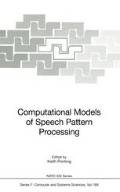Summary
Automatic morpho-syntactic tagging is an area where statistical approaches have been more successful than rule-based methods. Nevertheless, available statistical systems appear to be unable to hold long span dependencies and to model unfrequent structures. In fact, part of the weakness of statistical techniques may be compensated by rule-based methods. Furthermore, the application of rules during the probabilistic process inhibits the error propagation. Such an improvement could not be obtained by a post processing analysis. In order to take advantage of features that are complementary with two approaches, a hybrid approach has been followed in the design of an improved tagger called ECSta. In ECSta, as shown in this paper, a stack-decoding algorithm is combined with the Viterbi classical one.
Access this chapter
Tax calculation will be finalised at checkout
Purchases are for personal use only
Preview
Unable to display preview. Download preview PDF.
References
Brill E., A simple Rule-Based Part of Speech Tagger, 3nd conf. on Applied Natural Language, Trento, Italy, April 1992, pp. 63–66.
Derouault A.M., Merialdo B., Natural Language Modeling for Phoneme-to-text transcription, IEEE Trans. on Pattern analysis and machine intelligence, vol. PAMI-8 No 6, Nov. 1986.
El-Bèze M., Spriet T., Intégration de contraintes syntaxiques dans un système d’étiquetage probabiliste, TAL January 1996.
Hart P., Nilsson N., Raphael B., A formal basis for the heuristic determination of minimum cost paths, IEEE Trans. Systems Sci. Cyberne, 1968, pp 100–107.
Jardino M., Adda G., Automatic determination of a stochastic bi-gram class language model, Proc. Grammatical Inference and Applications, 2nd Int. Coll. ICGI94, Spain, Sept. 1994, pp. 57–65.
Jelinek F., Continuous speech recognition by statistical methods, Proceeding of the IEEE, vol. 64, April 1976, pp. 532–556.
Kuhn R., yDe Mori R., The application of semantic classification trees to natural language understanding, IEEE Trans. on pattern analysis and machine intelligence, vol. 17, No. 5, may 1995.
Mérialdo B., Tagging text with a probabilistic model, ICASSP 1991, Toronto, vol. S2, pp 809–812.
Author information
Authors and Affiliations
Editor information
Editors and Affiliations
Rights and permissions
Copyright information
© 1999 Springer-Verlag Berlin Heidelberg
About this chapter
Cite this chapter
Spriet, T., El-Bèze, M. (1999). Introduction of Rules into a Stochastic Approach for Language Modelling. In: Ponting, K. (eds) Computational Models of Speech Pattern Processing. NATO ASI Series, vol 169. Springer, Berlin, Heidelberg. https://doi.org/10.1007/978-3-642-60087-6_29
Download citation
DOI: https://doi.org/10.1007/978-3-642-60087-6_29
Publisher Name: Springer, Berlin, Heidelberg
Print ISBN: 978-3-642-64250-0
Online ISBN: 978-3-642-60087-6
eBook Packages: Springer Book Archive

